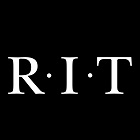People who work in the design and imaging field are responsible for designing, organizing, and producing print and Web-based media for business, communication, publishing, manufacturing, entertainment, and advertising markets. This is a large, exciting field that requires a variety of computer-based and traditional visual skills. The design and imaging technology program provides opportunities for students to enter various careers ranging from creative to highly technical positions at various degree levels. This program is available for qualified deaf and hard of hearing students.
As a student in the associate in occupational studies (AOS) degree in design and imaging technology, offered by RIT's National Technical Institute for the Deaf, you may choose a concentration in digital media, graphic design, or graphic production.
You will gain work experience through a required cooperative education experience. Depending on your specific program concentration and elective course selection, you will use traditional and computer-based methods to produce drawings, layouts, illustrations and digital photographic images, prepare documents for print, Web and digital distribution, produce interactive digital media, perform digital retouching and restoration of photographic images, produce composite digital images, design and produce websites, produce computer animations, plan and produce short-edited videos, and operate electrophotographic digital printing and inkjet systems.
Education in STEM (Science, Technology, Engineering, Math) careers is a major emphasis for students, parents and counselors as they consider which college programs match the students interests and aptitudes. Funding for STEM career preparation is often a driving factor. The design and imaging technology program is considered a STEM-career program. Graphic design and production for print, Web and digital media cannot happen without the use and application of technology and computing skills.






